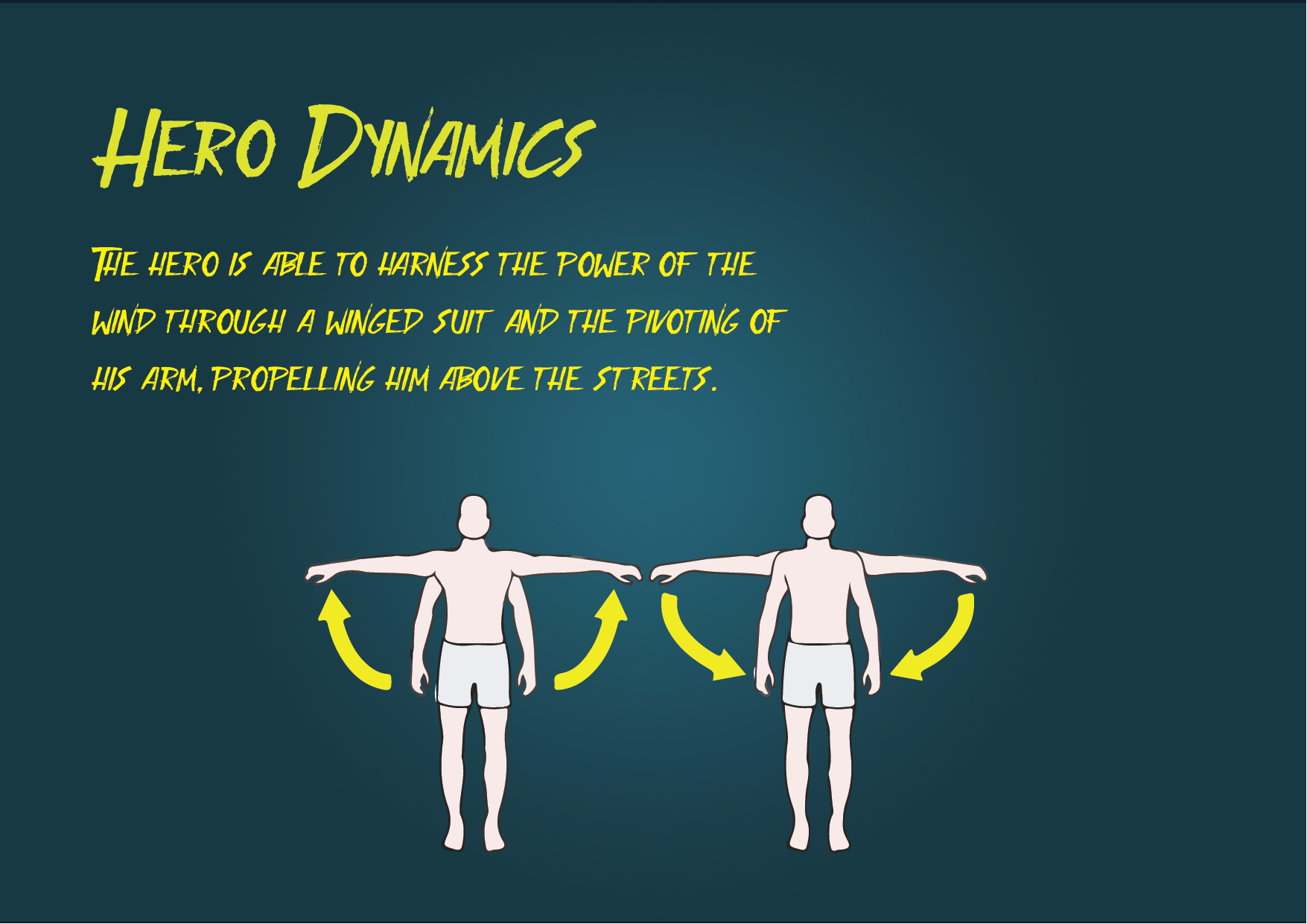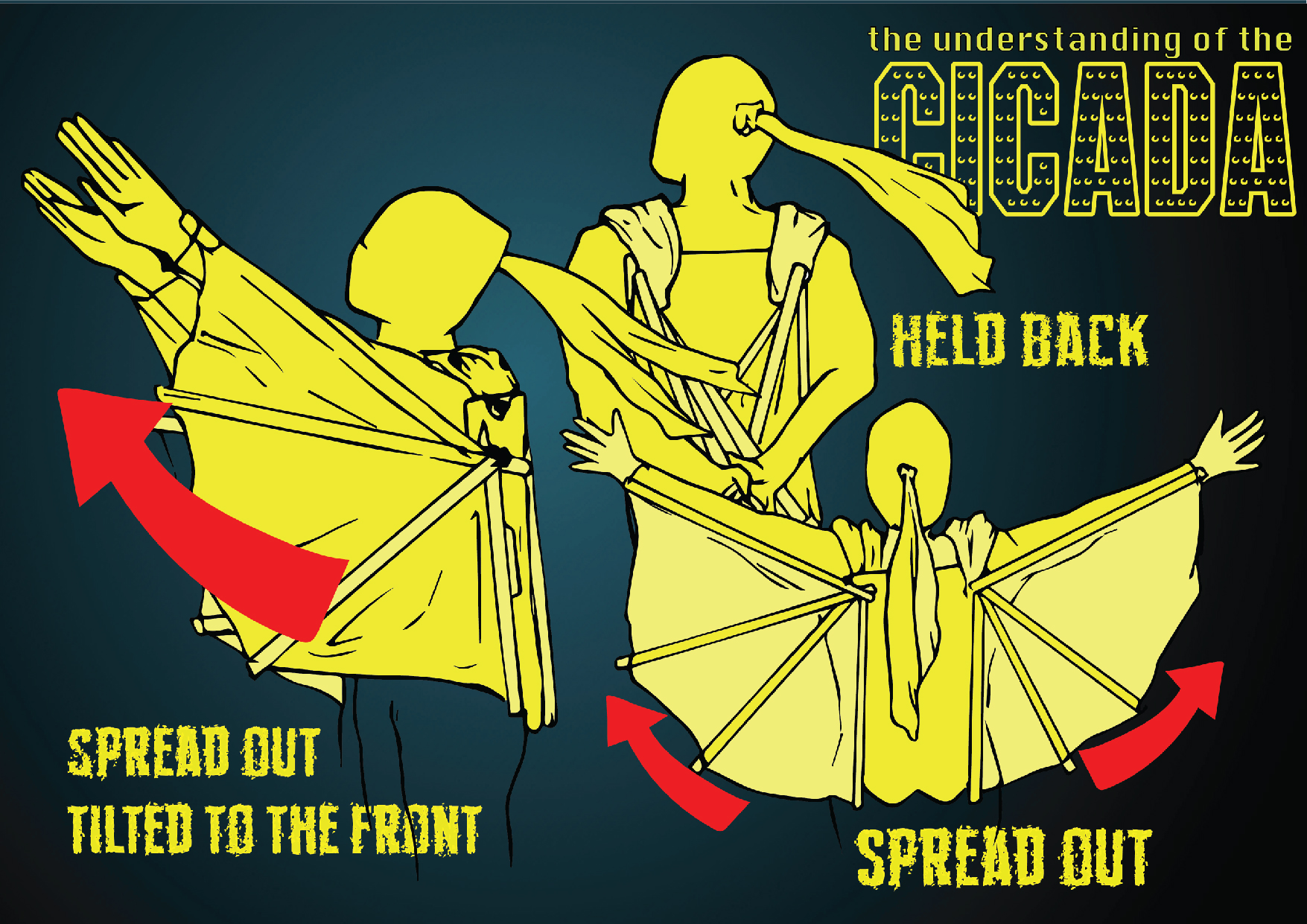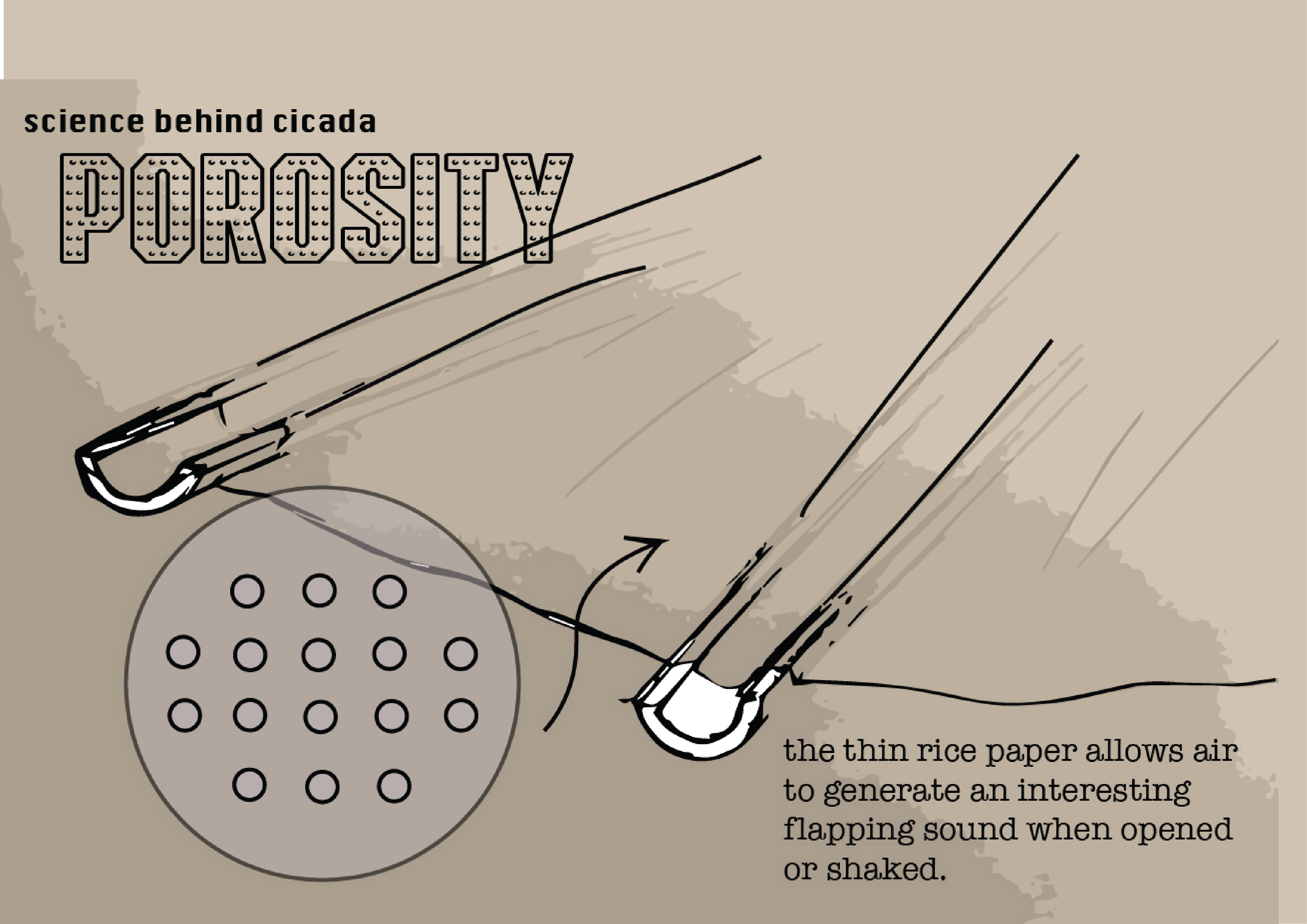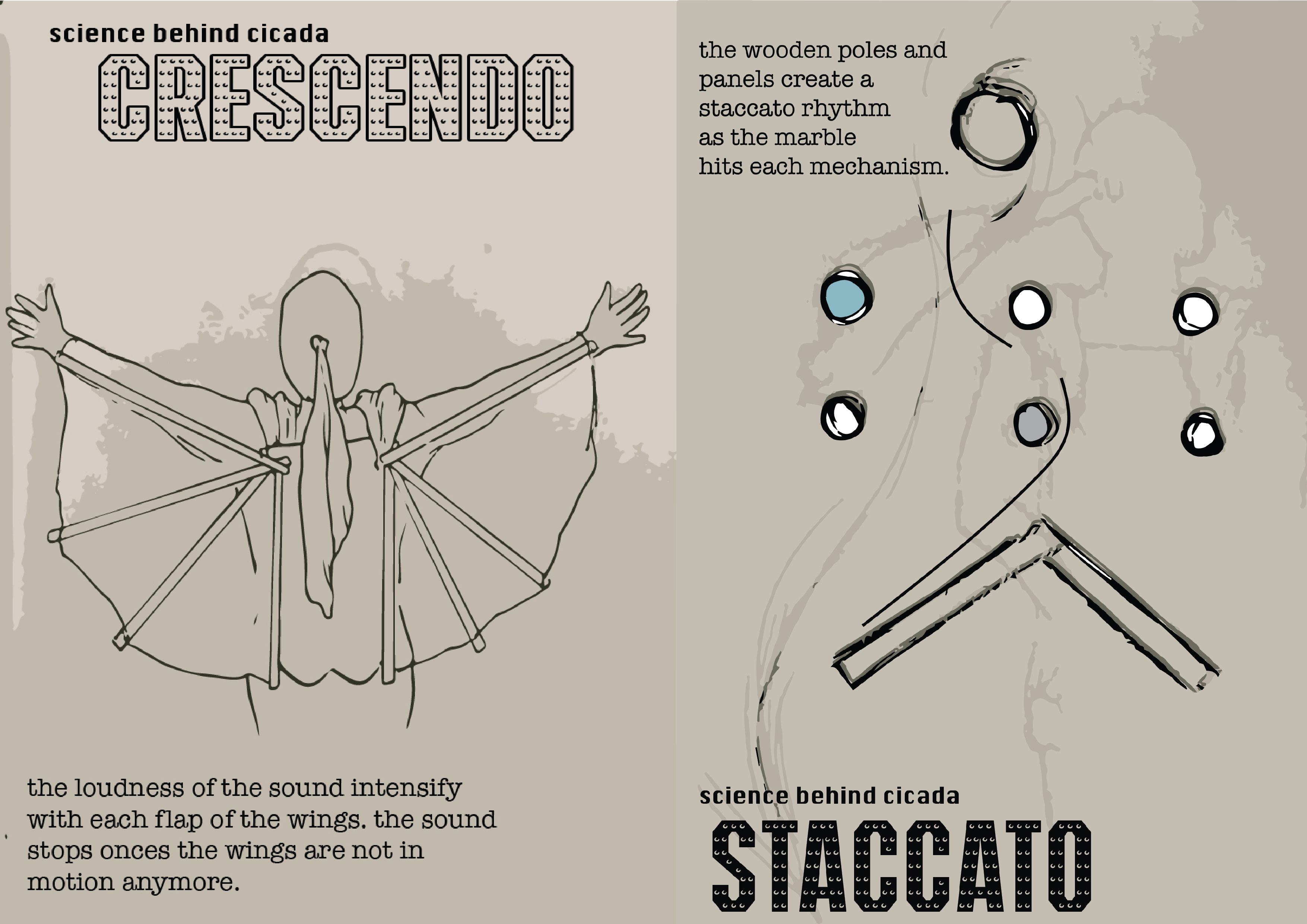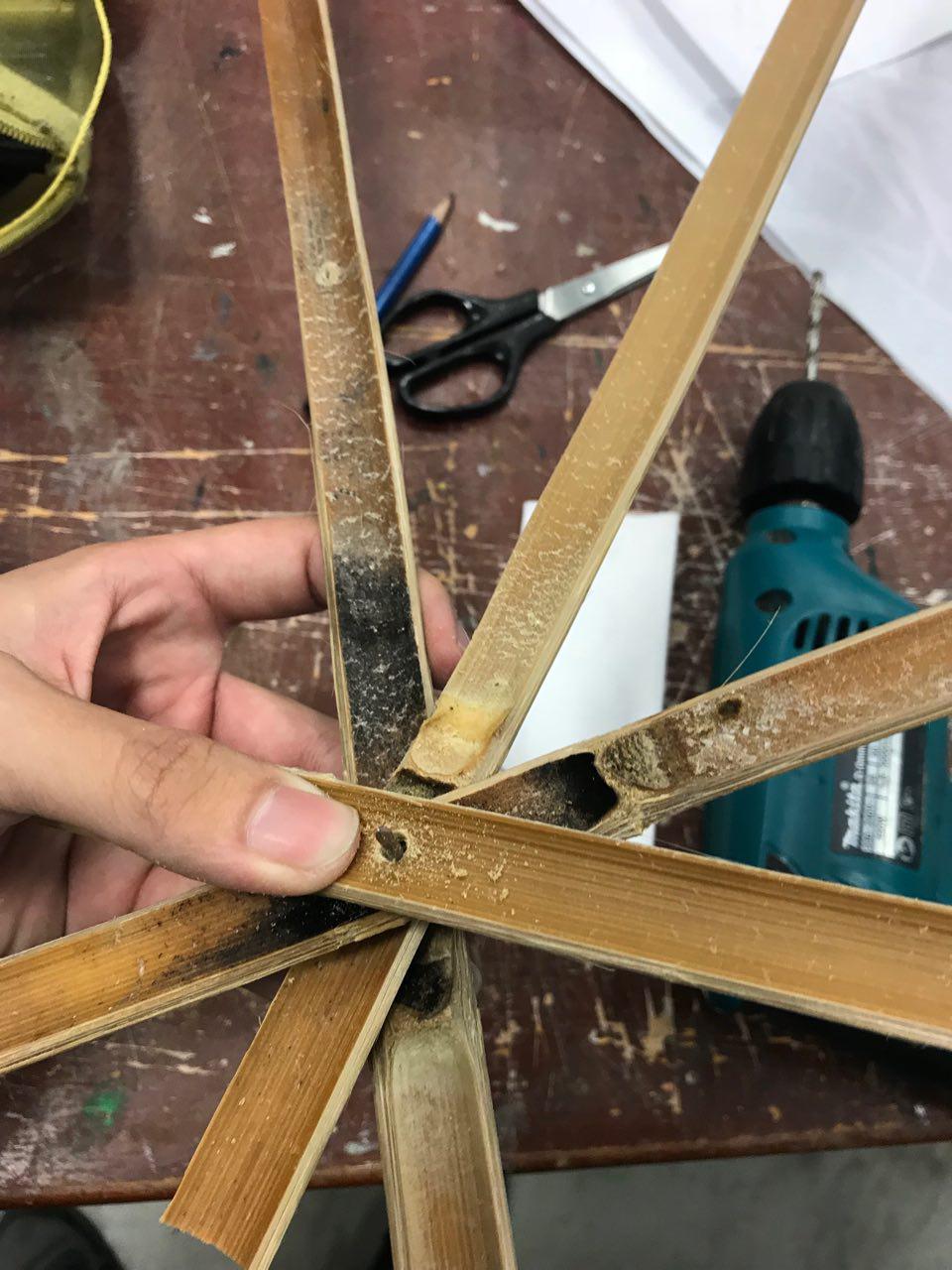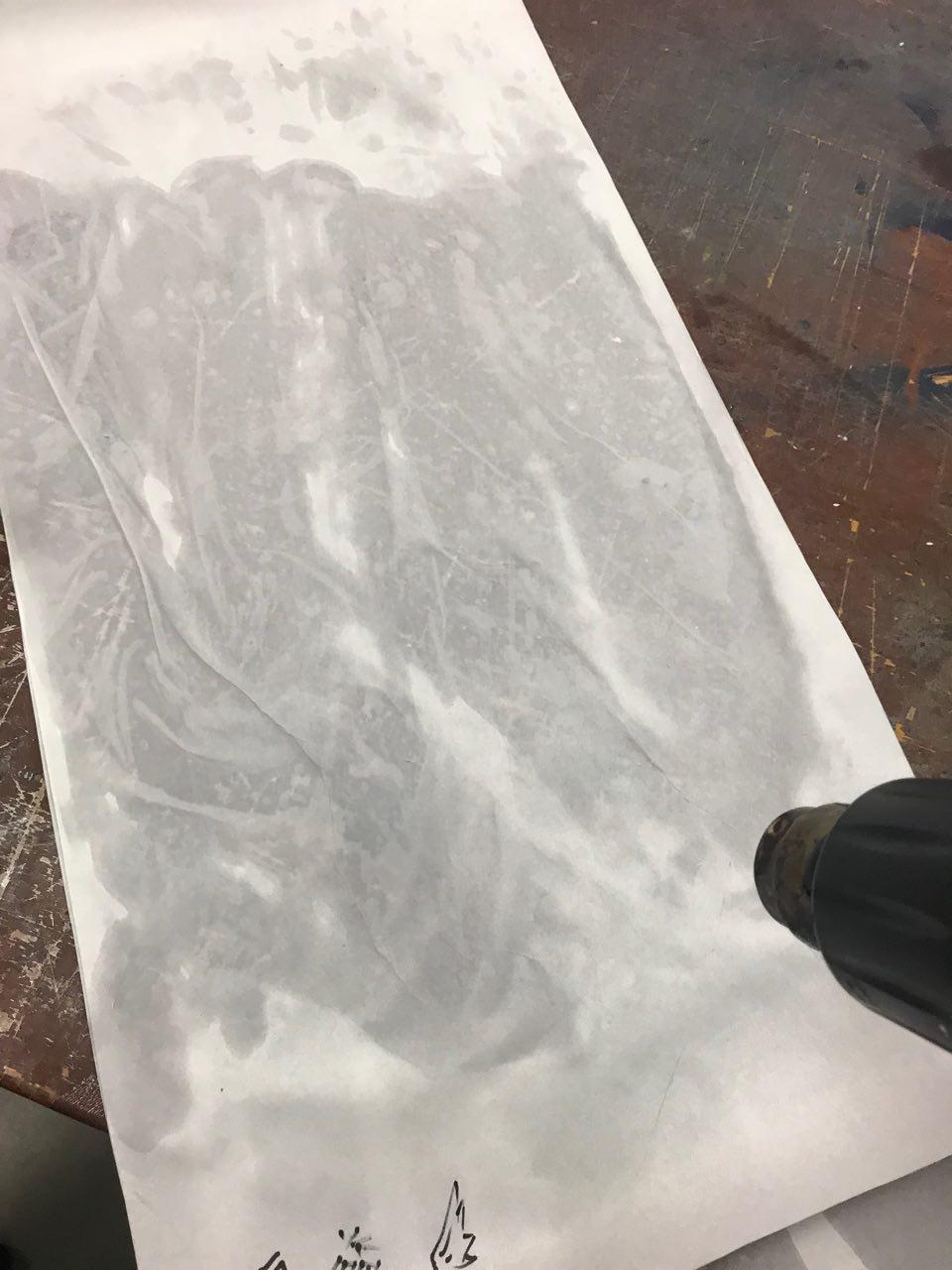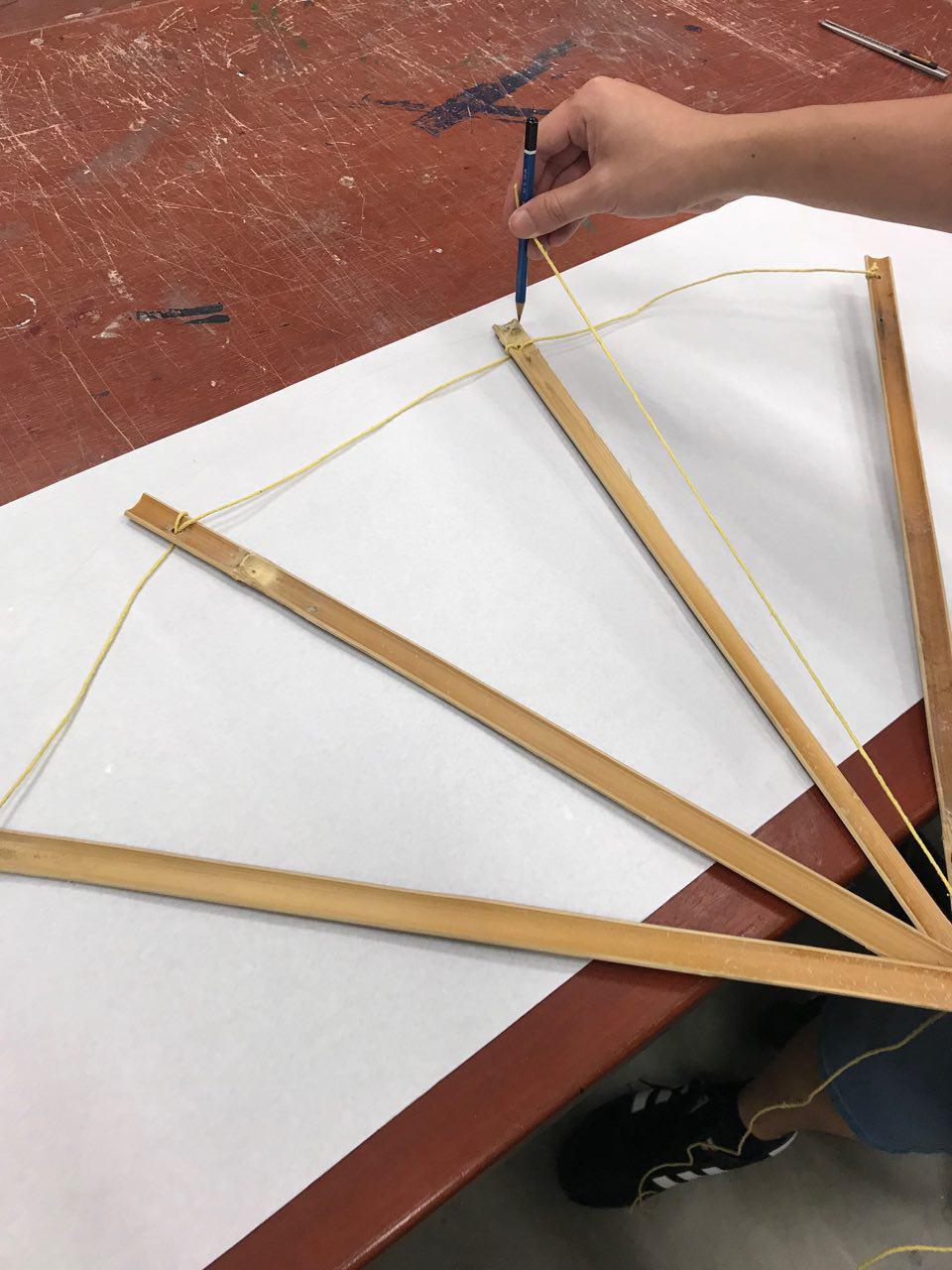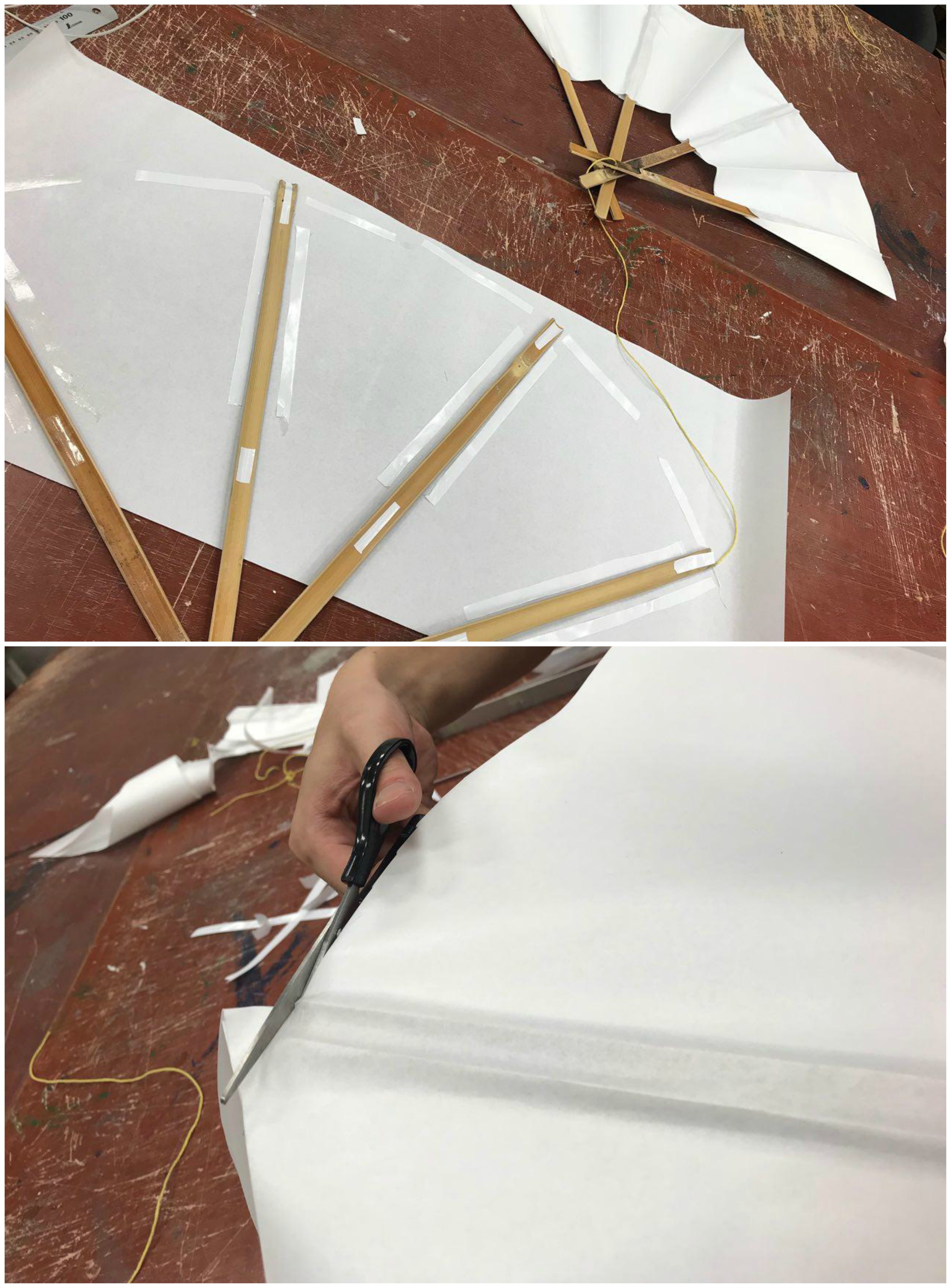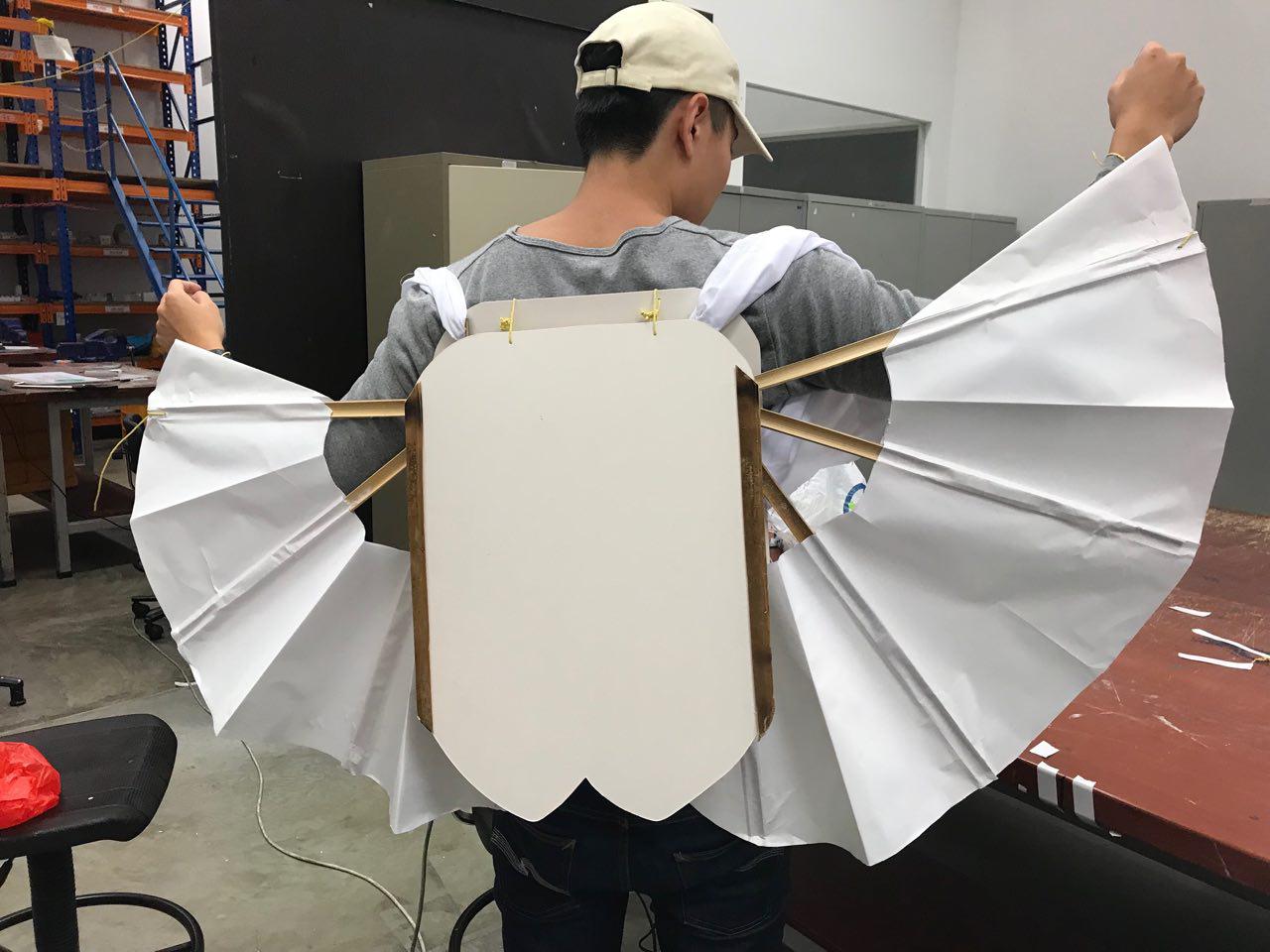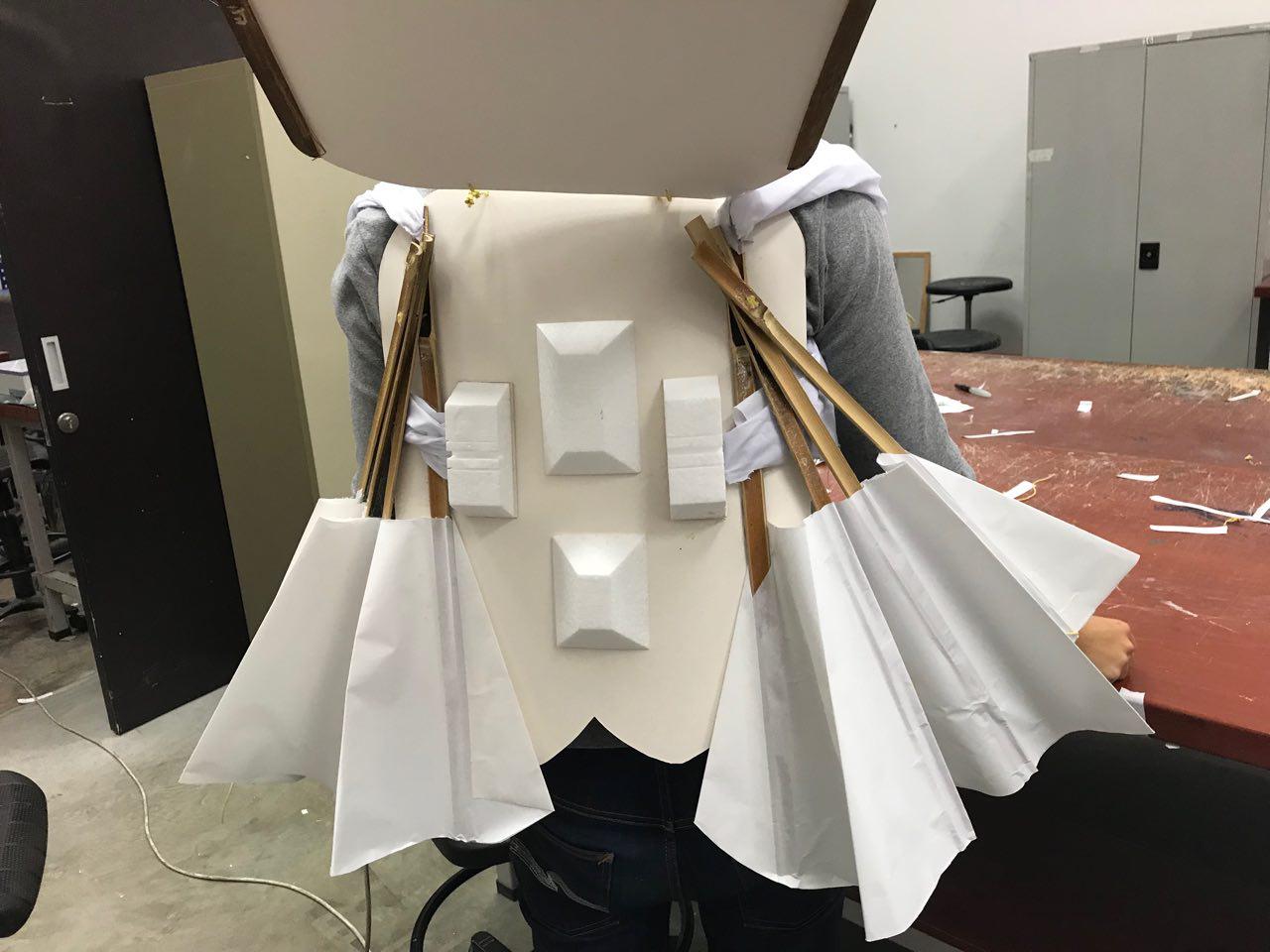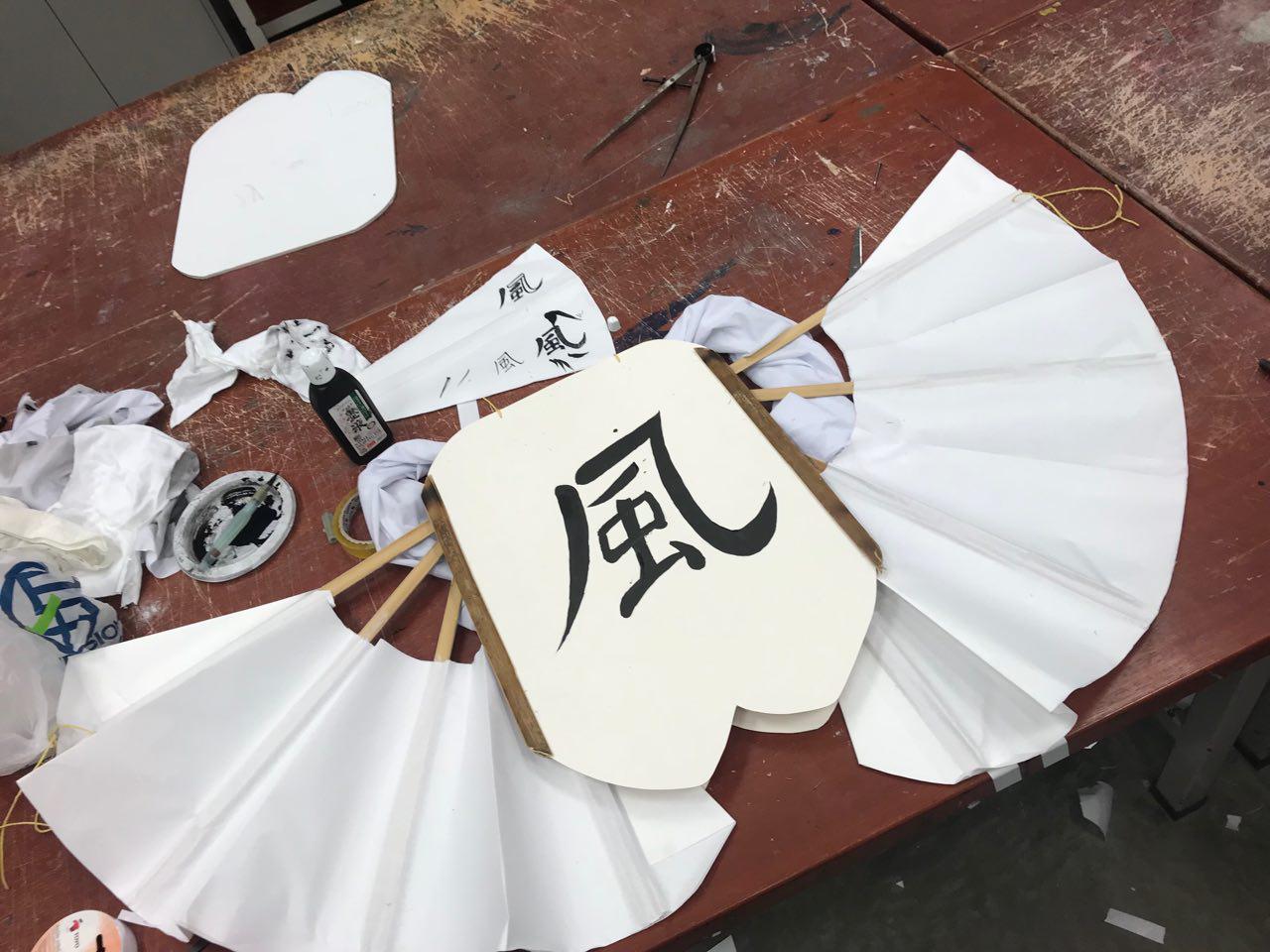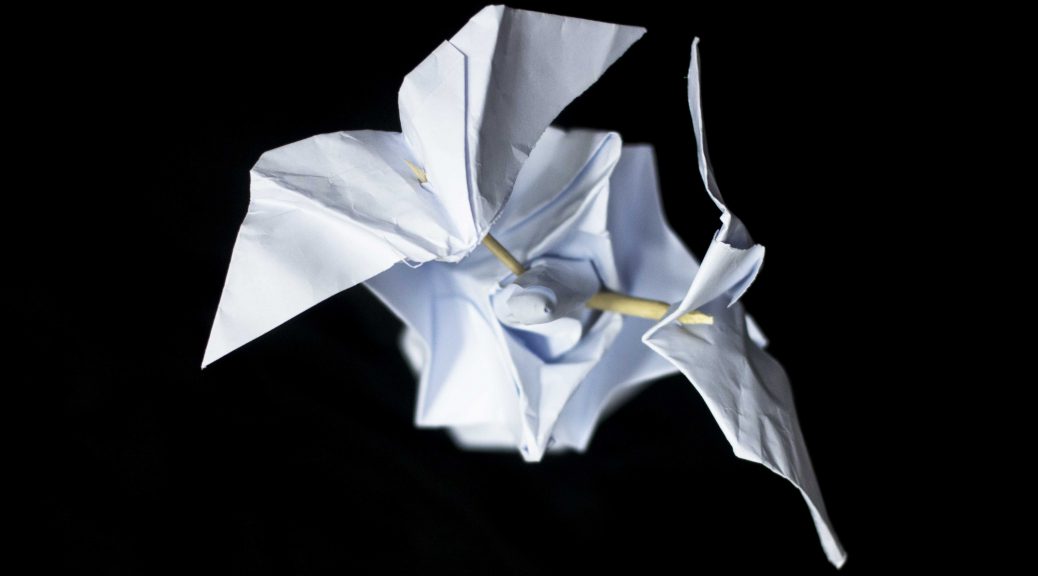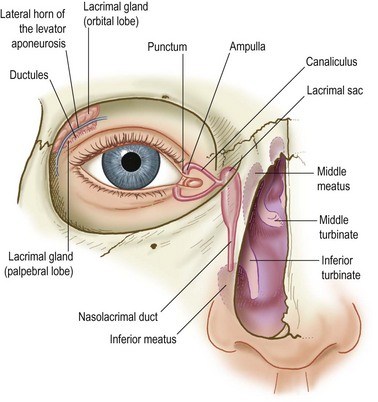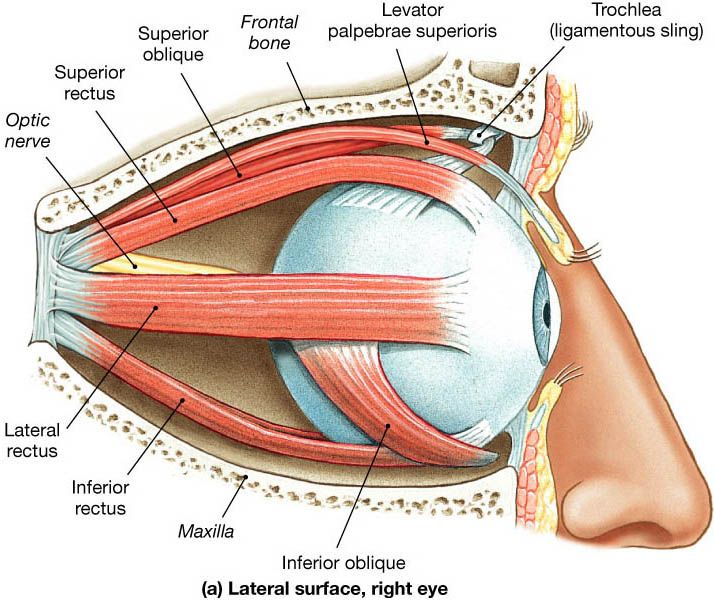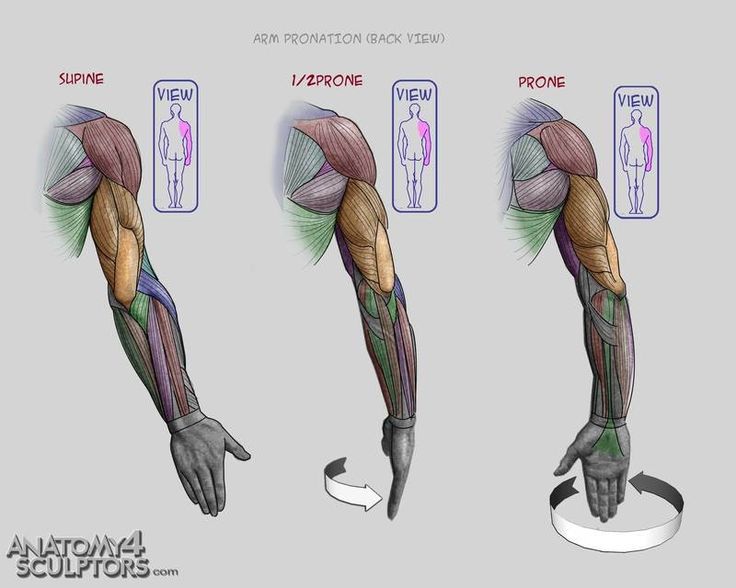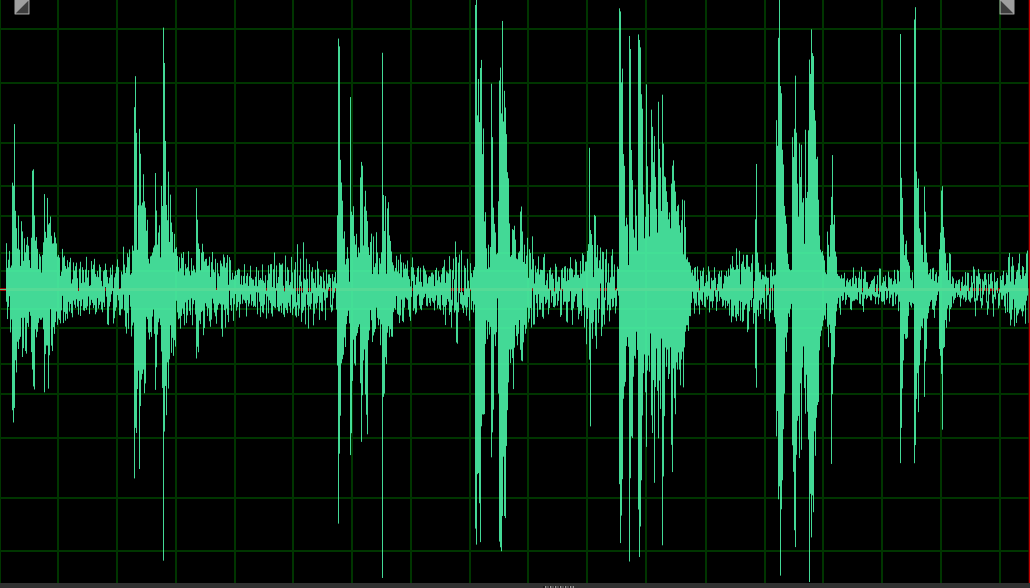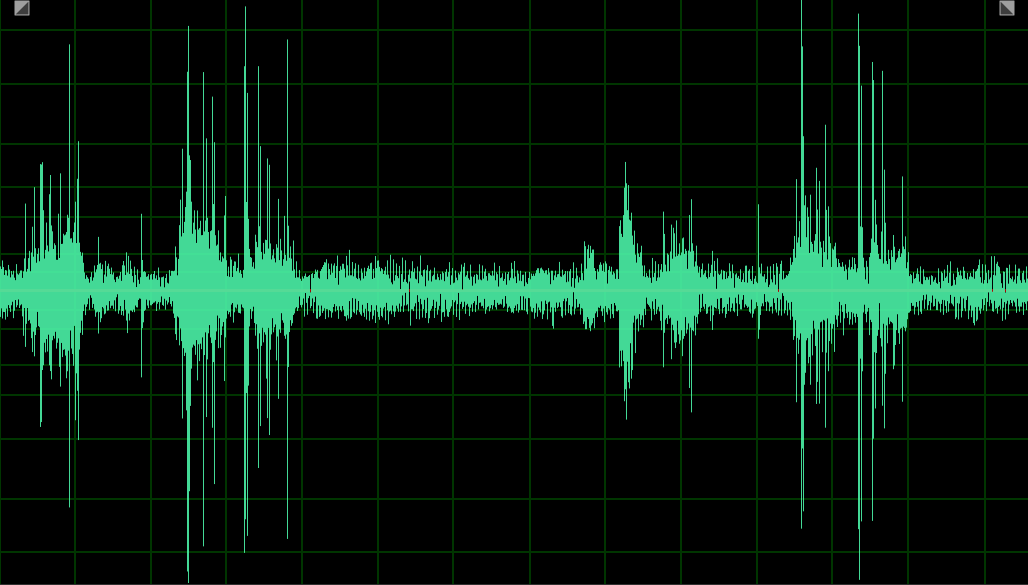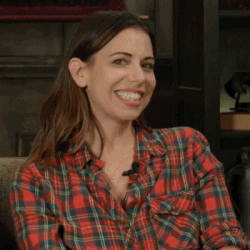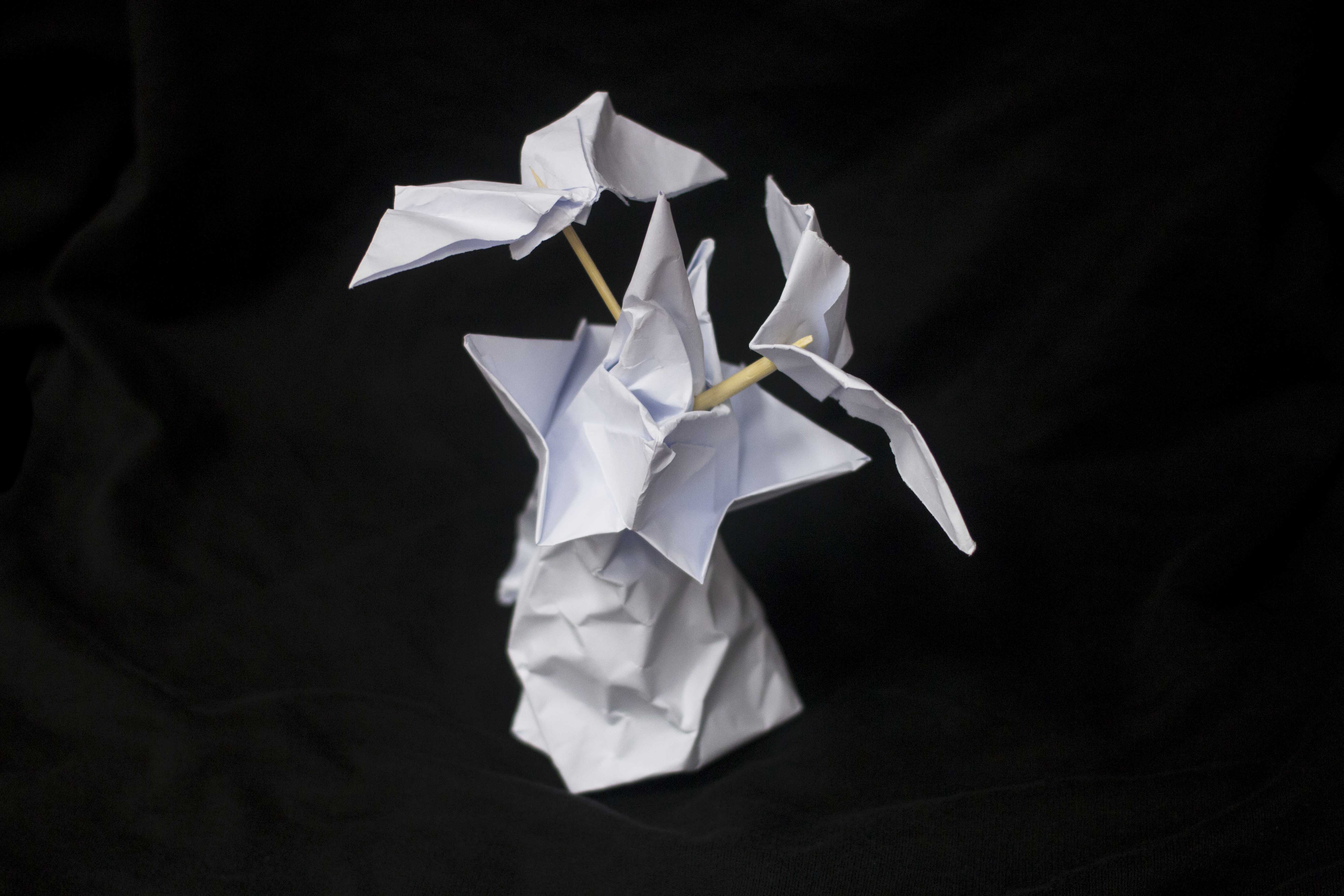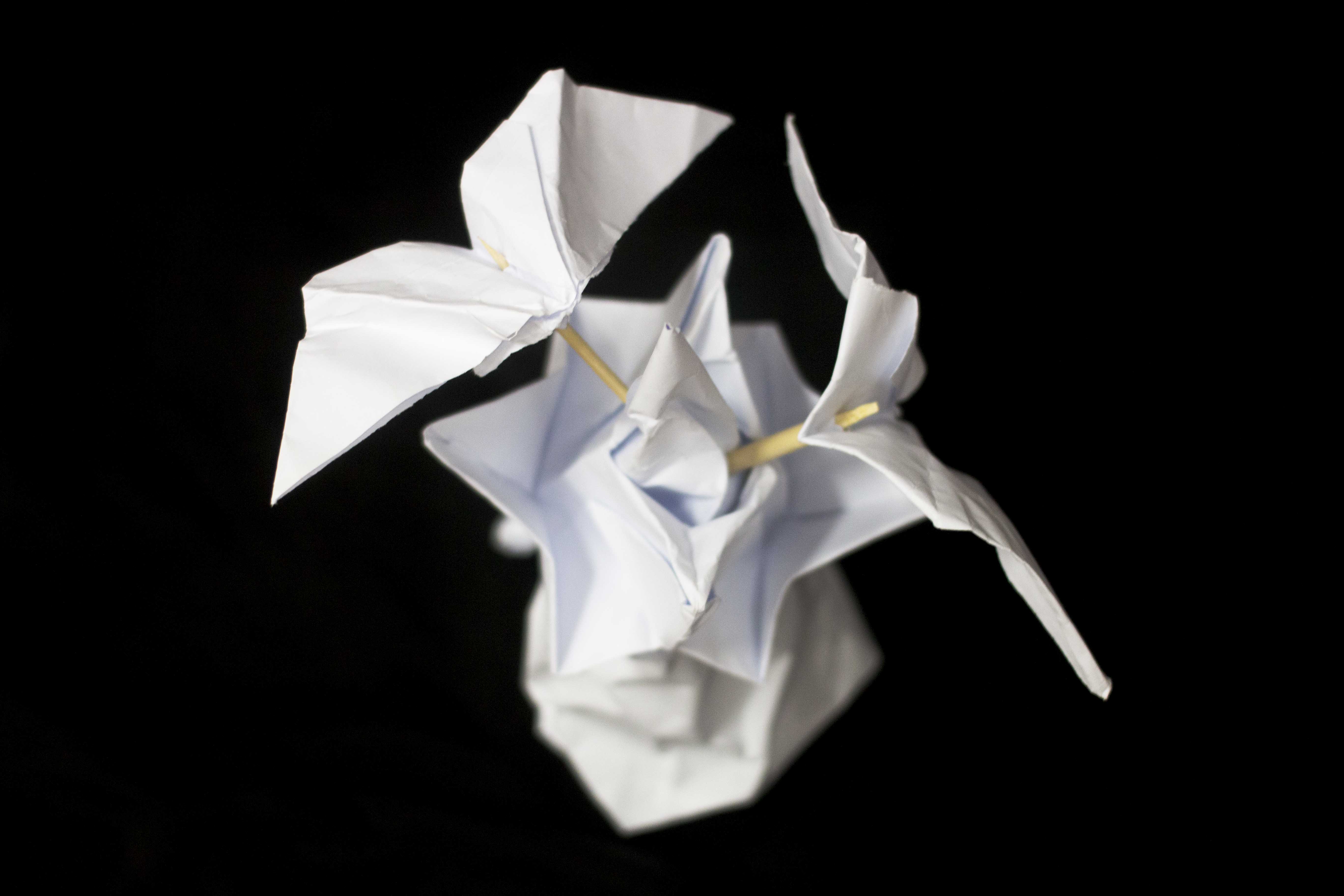Category Archives: Kokopelli’s Sound Shaper
Kokopelli’s Sound Shaper Part 1 – Process
Brendan and I began to explore our sounds further and we looked into what the eyes and arms represented.
We incorporated the best elements from each of our sound models which was the representation of the eye as a shutter as well as the relation of my sound to a humming bird.
We also began to explore the macro movements of the arm, pivoting along the shoulders instead of the elbow to create greater movement.
Initially, we thought of creating an umbrella to represent the eyes. The opening of the umbrella would be parallel to a pupil letting light into the eyes.
Because we had to incorporate a form of fabric or paper into our mechanism, we decided to use rice paper!
To include the macro movement of the arm, we thought of creating a flute using the handle of the umbrella as it would be able to create sounds as the umbrella was swung.
We decided to do some research on the construction of a traditional Japanese umbrella but realised that we do not possess the skills and dexterity required to create such an intricate item.
Cheryl also commented that it should be more of a wearable object, rather than an accessory, otherwise it would simply become a musical instrument.
We went back to the drawing board and decided to revisit the idea of incorporating wings into our model, this time using elements from the umbrella.
We really liked the aesthetic of bamboo and paper and it made senses in the context of a bird as their bones are hollow. We got a 3m long bamboo pole and cut it down to my arm’s length as it was going to be attached to me.
The bamboo was a little hard so Brendan suggested that we submerge it in water to allow it to soften. We placed the bamboo into the ADM fountain overnight to see if the theory actually works.
However, despite our optimism, the bamboo just turned out to be a darker shade after taken out of the water and it was also filthy due to the buildup of slime and dirt.
I observed from the umbrella making video that they did not use whole bamboos for the spokes of the umbrella frame. Thus, decided to split the bamboo into quarters to make them more flexible as well as increase the amount of bamboo rods we had.
To do this, I took a wood carver and hammered it perpendicular to the bamboo pole, creating a crevice in the pole. After that, it was a matter of splitting the bamboo into two.
The next step would be attaching the bamboo to the back plate. We drilled holes into the bamboo and threaded a string through it.
The main issue we faced was attaching the paper to the bamboo poles. We experimented with variety of adhesives to stick the rice paper. Initially, we used white glue mixed with water to stick two sheets of paper, unfortunately the result was ugly as pockets of air was trapped within the sheets as it dried unevenly.
In the end, we found out that double sided tape works best for this case as it prevented the paper from crumpling, and it was neat as the tape was not visible after we pasted the paper.
Here are just some pictures of us measuring and ensuring that the paper is of the right dimensions. We used a string to make an outline of the path we had to cut along. We paste double sided tape onto the bamboo as we wanted to capture the structure, especially the curvature.
Prior to comments given to us by Cheryl, we thought it would be a good idea to cover up the back portion of the winged suit to make it more aesthetically pleasing and minimal, thus, we attached a second plate on the back.
We added Styrofoam blocks to ensure that the back plate does not completely fold onto the bamboo structure, crumpling the paper and also preventing the wings from fully closing.
The final touch would be adding the 風! Since our model is based on a bird, and Kokopelli’s instrument is a flute, we thought it would be apt to include it in the overall design!
(End of Part One)
Kokopelli’s Sound shaper Research and model
These were the two words Brendan and I picked. It was exciting because these two body parts are vastly different from each other in terms of how they move as well as the small intricacies between parts.
To begin, an eye is one of the most delicate and intricate organsof the body as it is solely responsible for a sense. The eye is made up of both the eye ball as well as the eyelids.
The eyeball itself has a more circular motion, whereas the eyelids has a linear motion, similar to a shutter.
The second body part is more straightforward being an arm. I would say that there are two ways in which we could breakdown the arm, one being pivoting about an axis which would be the elbow, or it could also rotate about the shoulder socket.
We then begin to source for our sounds. Brendan and I decided to work on separate sounds.
My good sound of choice was coins being dispensed from the vending machine.
As you can tell, the sound of coins dropping has a distinctive sound which has a pleasant connotation when we hear it. Whenever a coin drops, we immediately look to the ground in search for it.
Due to the nature of coins, they also end up escaping our grasp as they tend to roll across the floor.
The sound is also piercing in nature, and has substantial reverb because the bouncing of coins when they were being dispensed.
My bad sound of choice was the sound of money being rejected from the vending machine, specifically the note dispenser. This is an especially annoying experience which many of us face when the machine refuses to accept our money.
This sound has a distinctive mechanical sound and it seems to mimic an extension and retraction of an arm. This sound would symbolise the pivoting of the arm about the elbow.
I wanted to incorporate the psychological aspects of the various sound samples I had. The psychological aspect of coins falling would be their fleeting presence as we struggle to chase after and reach for our money.
I wanted to capture the essence of movement for each of these sounds.
For a fleeting presence, I thought, what better way to represent something fleeting than birds? I thus began to blindly try and fold birds just by trial and error.
The similarities between a bird’s wing as well as batting of eyelids can also be drawn in the case of a hummingbird due to the quick repetition of the flapping of wings.
Because of this resemblance, I felt that it added another level of depth to the use of birds as it linked one of the body parts in as well.
The other keyword I wanted to portray was the reaching or the extension of an arm towards an object. It was difficult to create the illusion of movement with my paper models, however I made sure to have different layers in my paper model to show progress and action.
As you can see, the piercing action of the cone portrays the element of reaching, while the birds represent the money fleeting from the grasp. I did not want the cone to be smooth as the sounds created by the vending machines were sharp and piercing.

